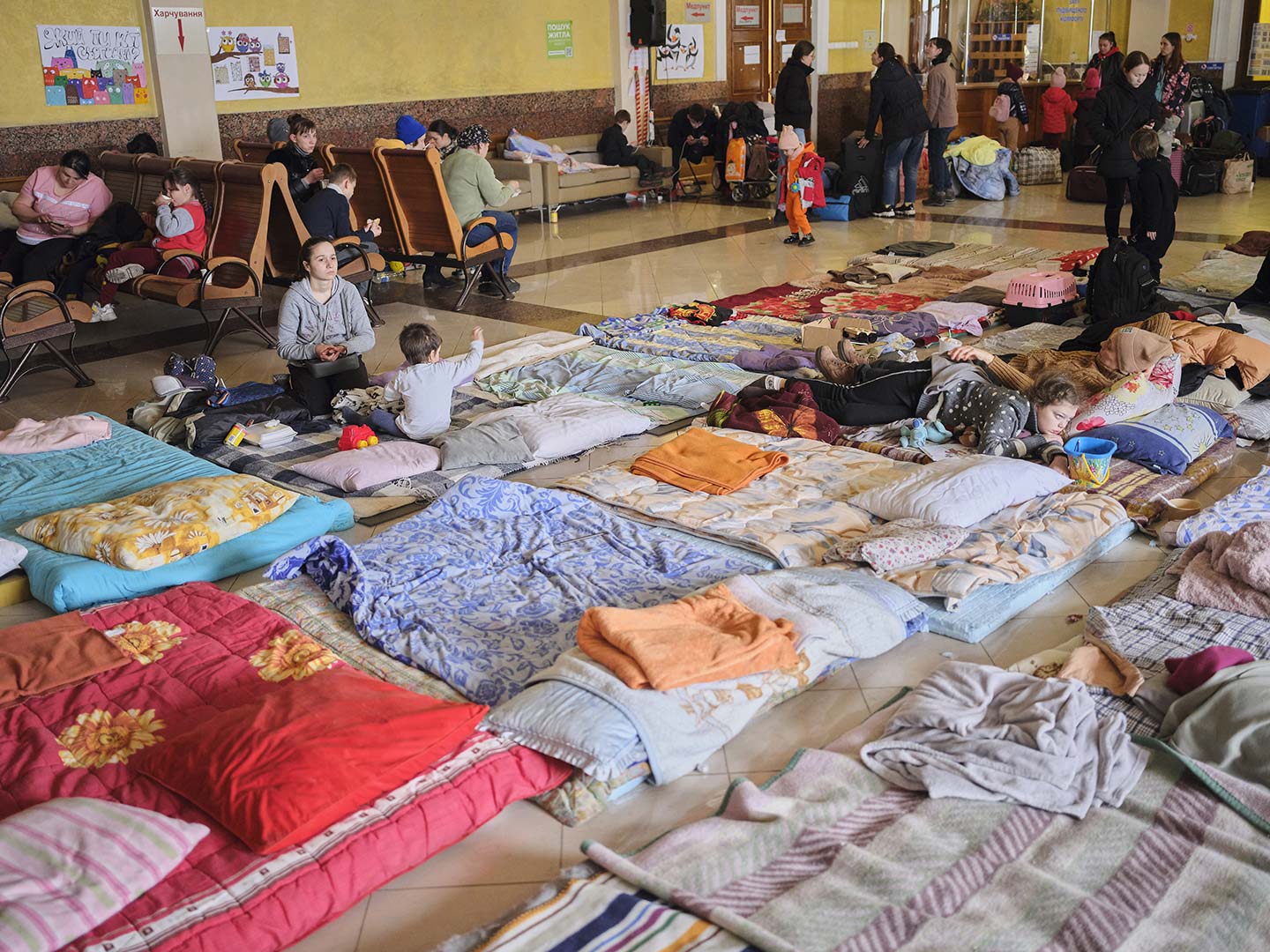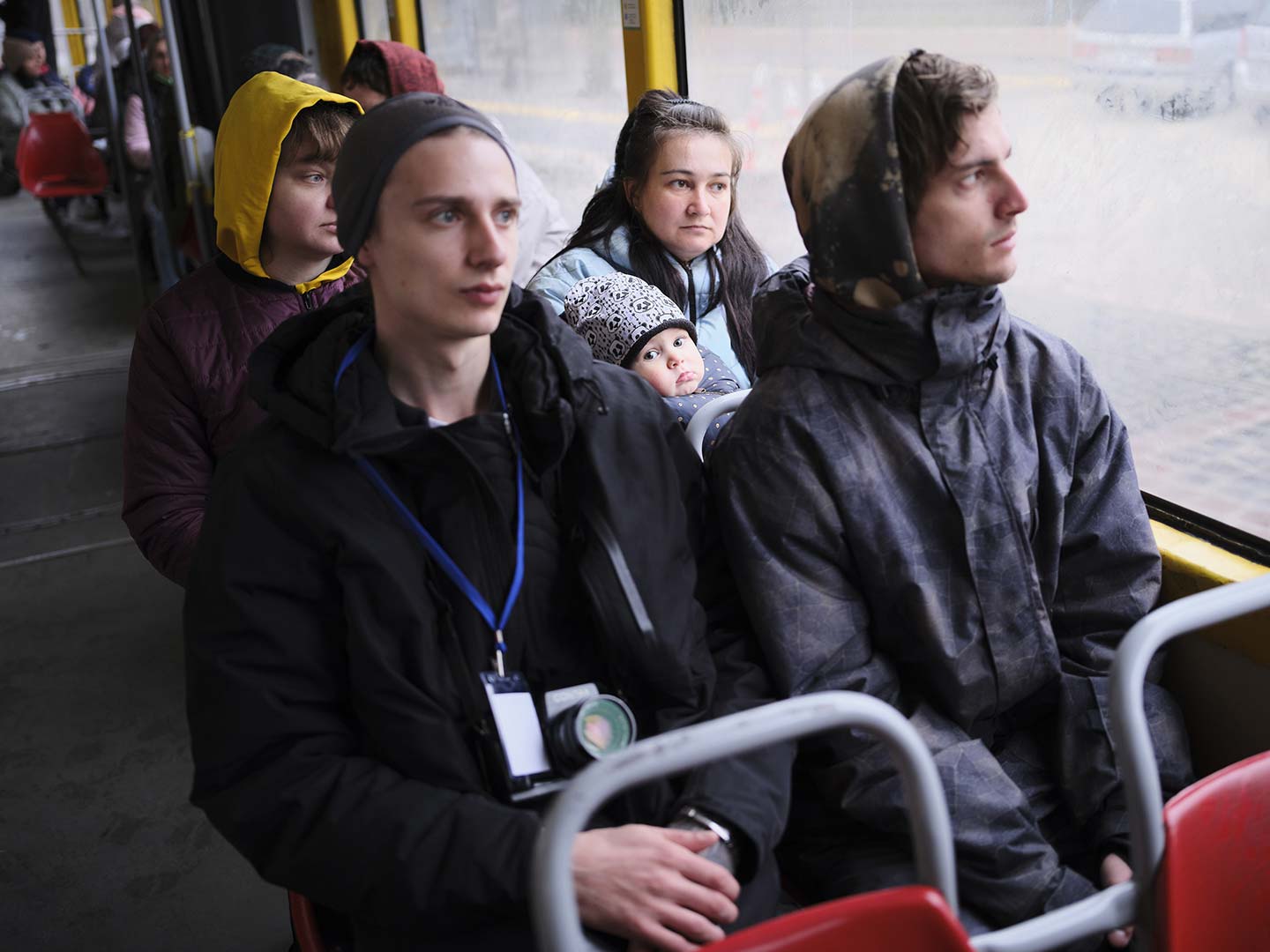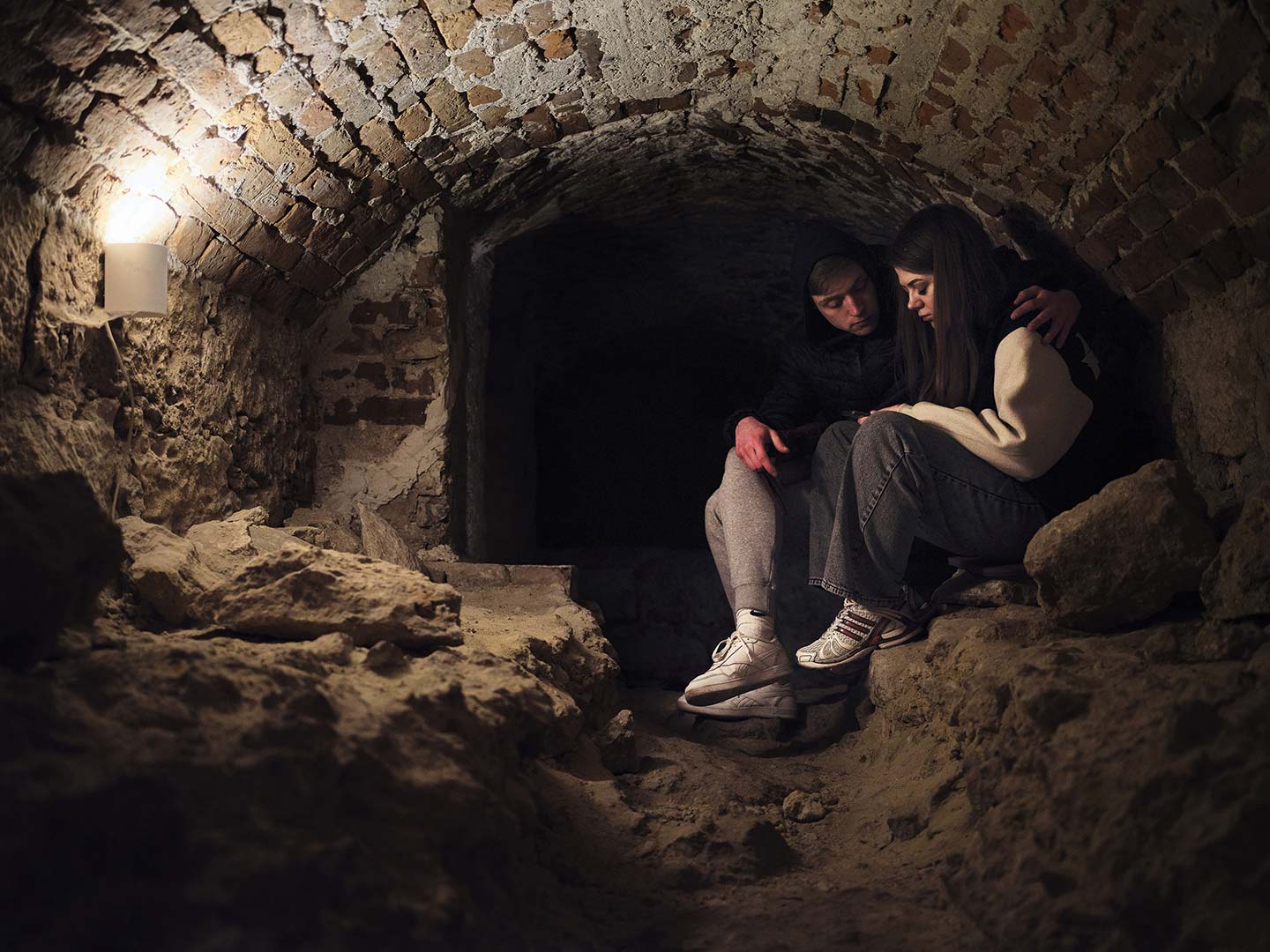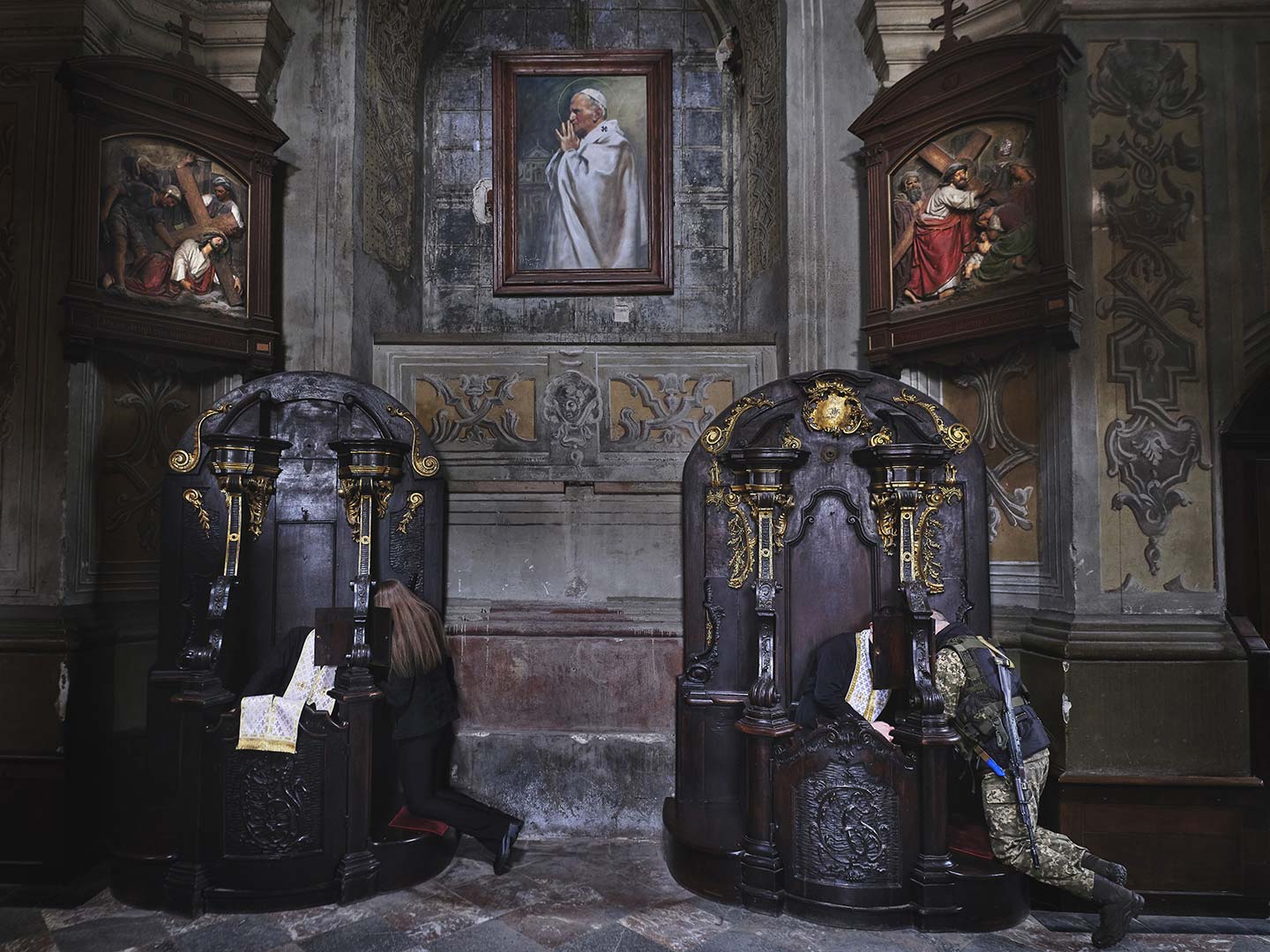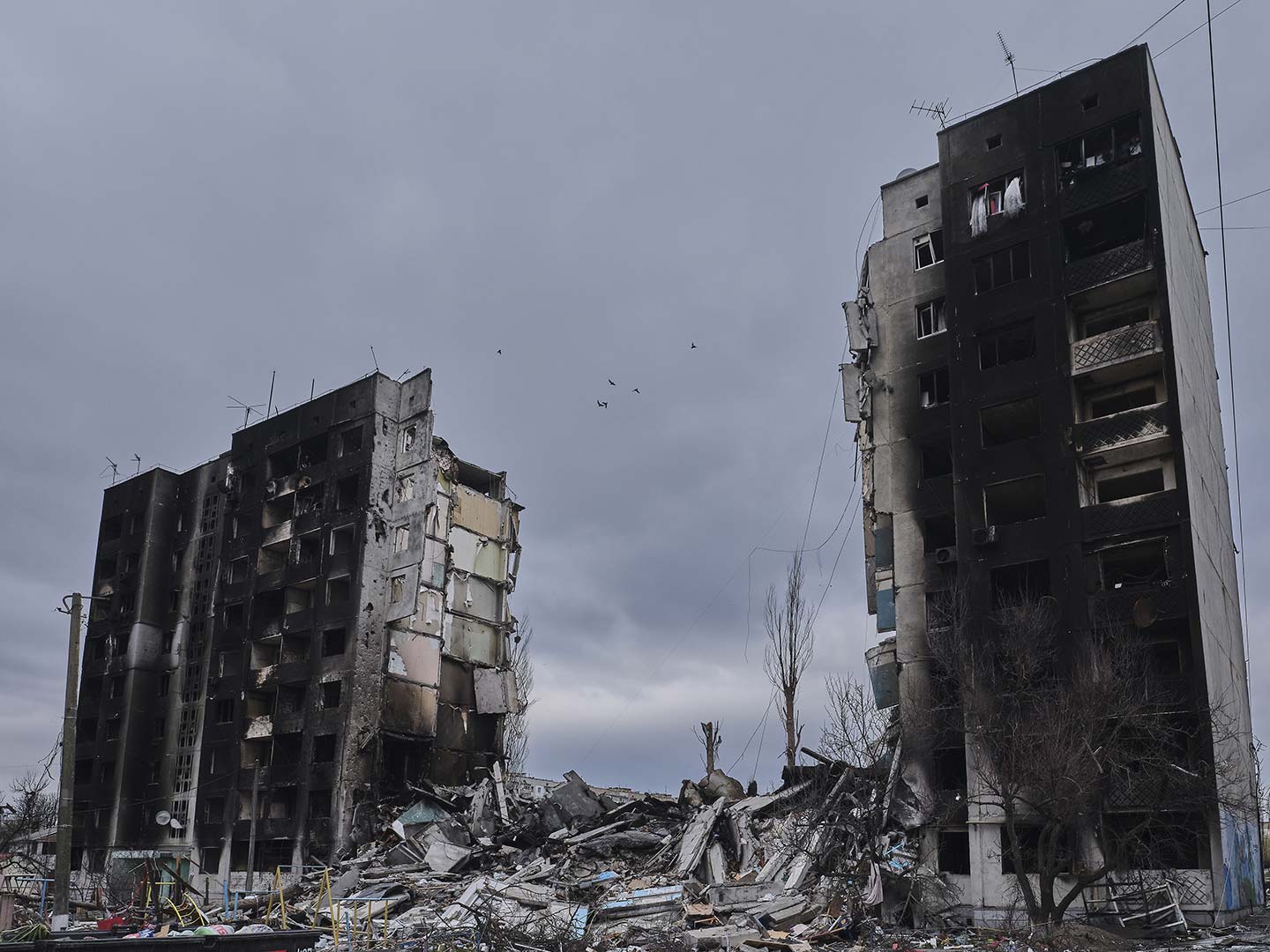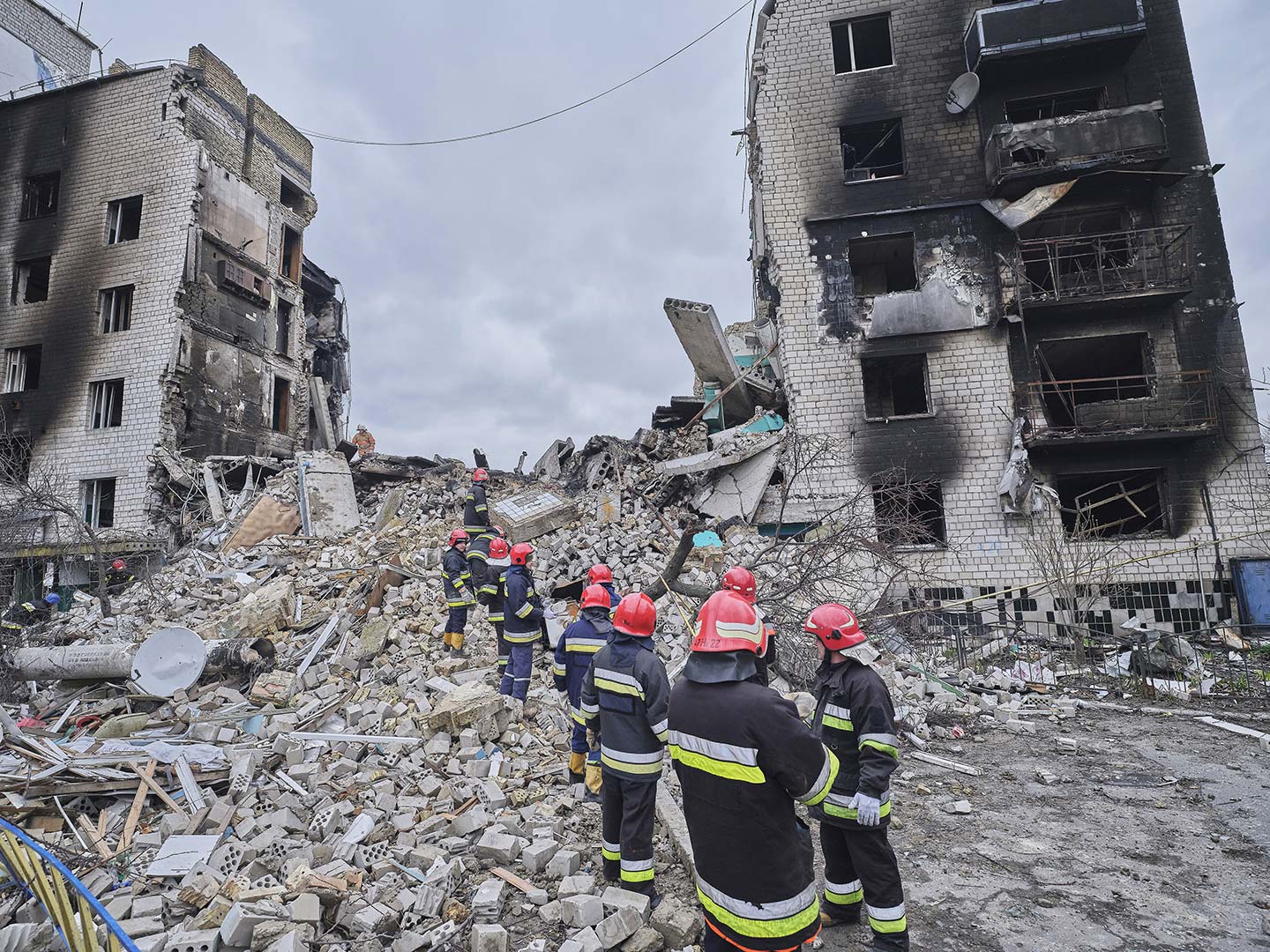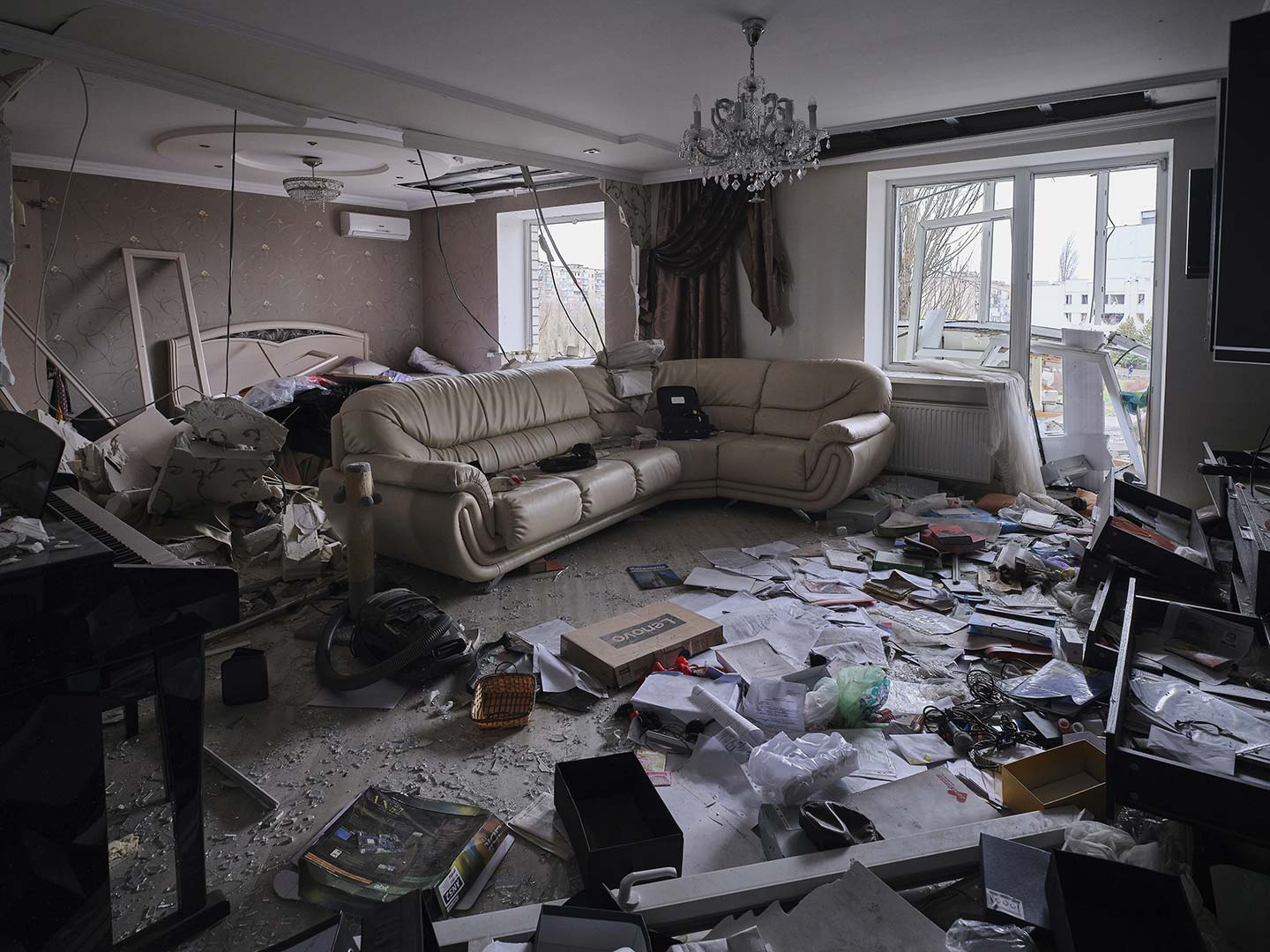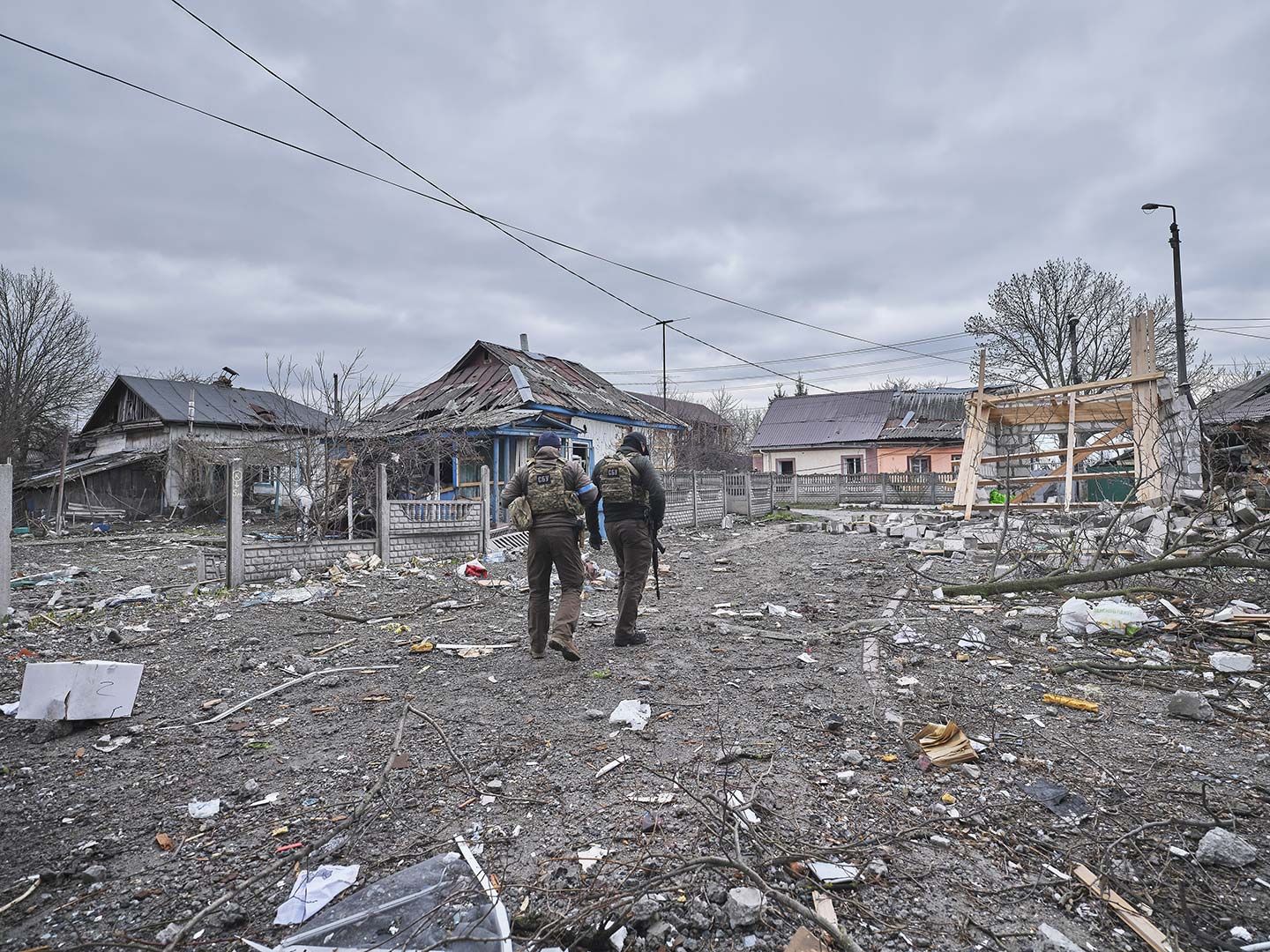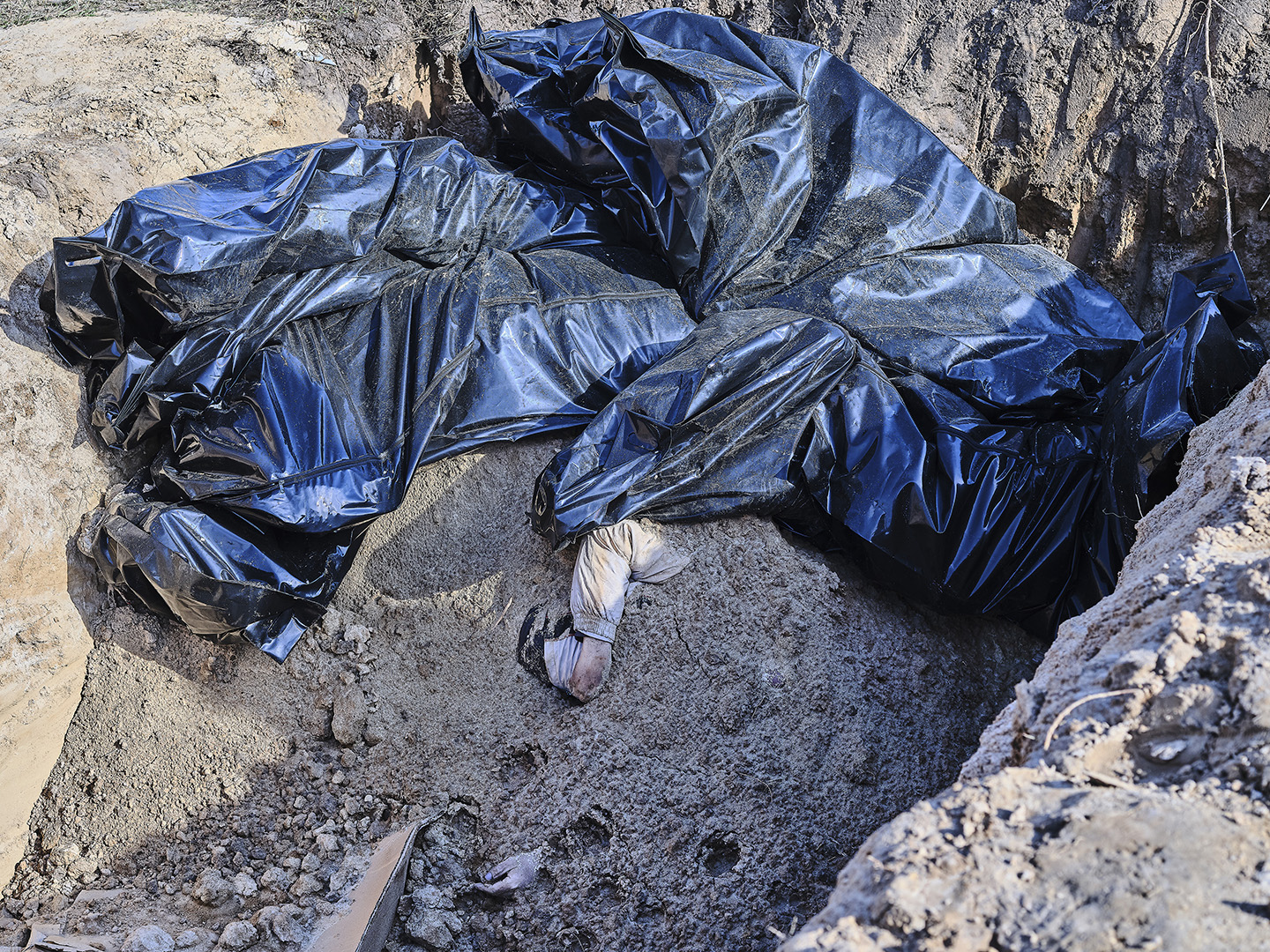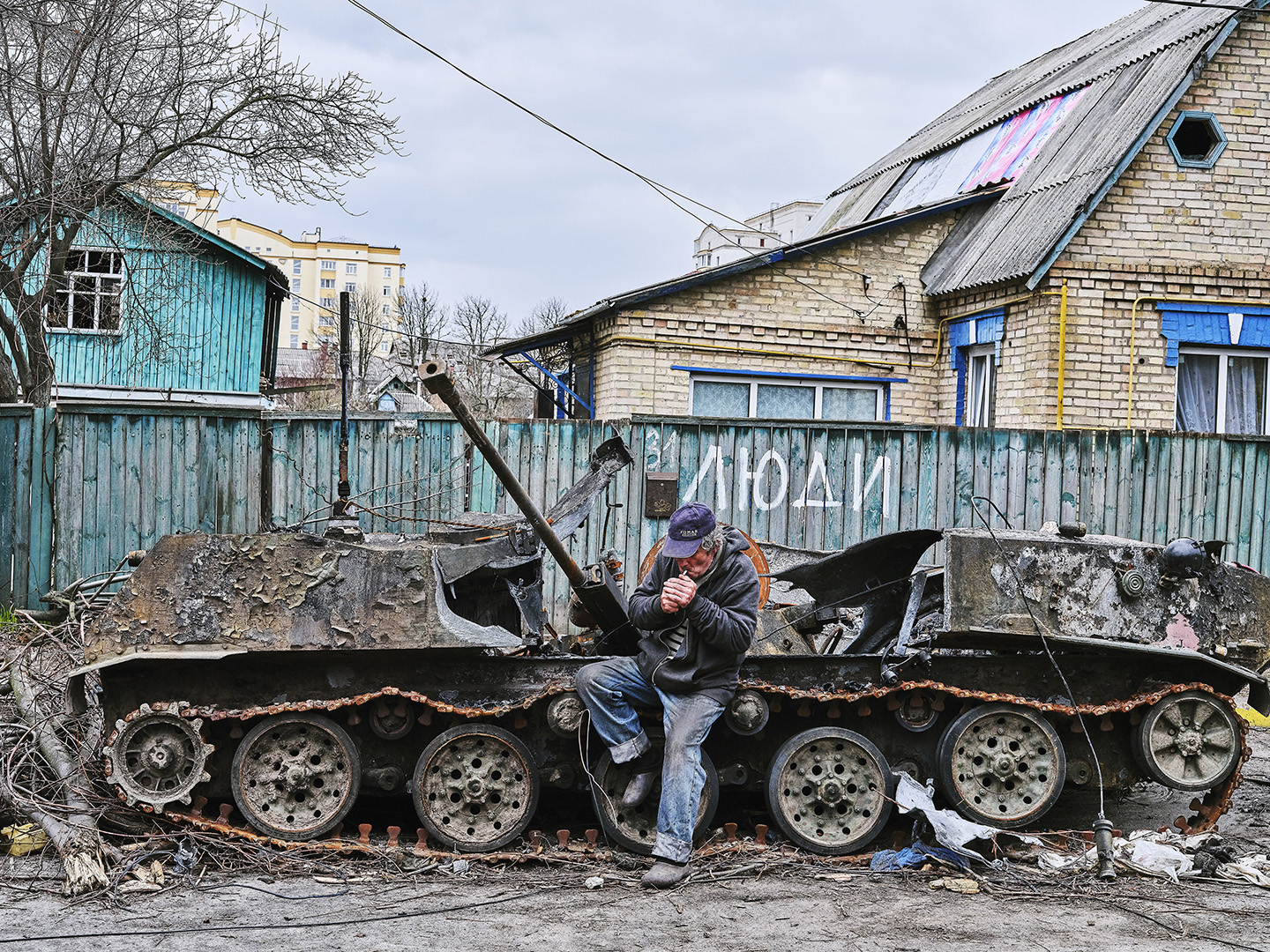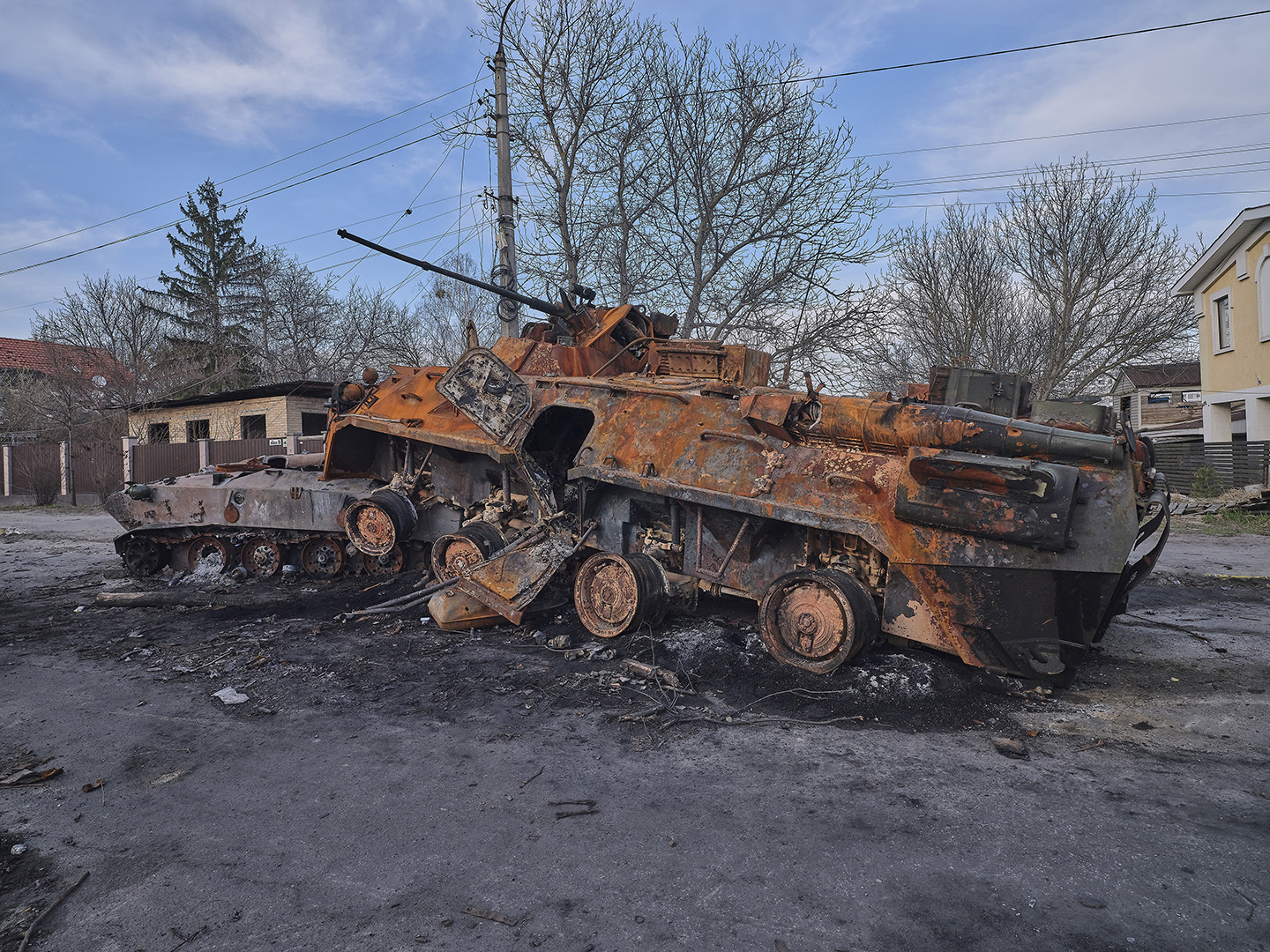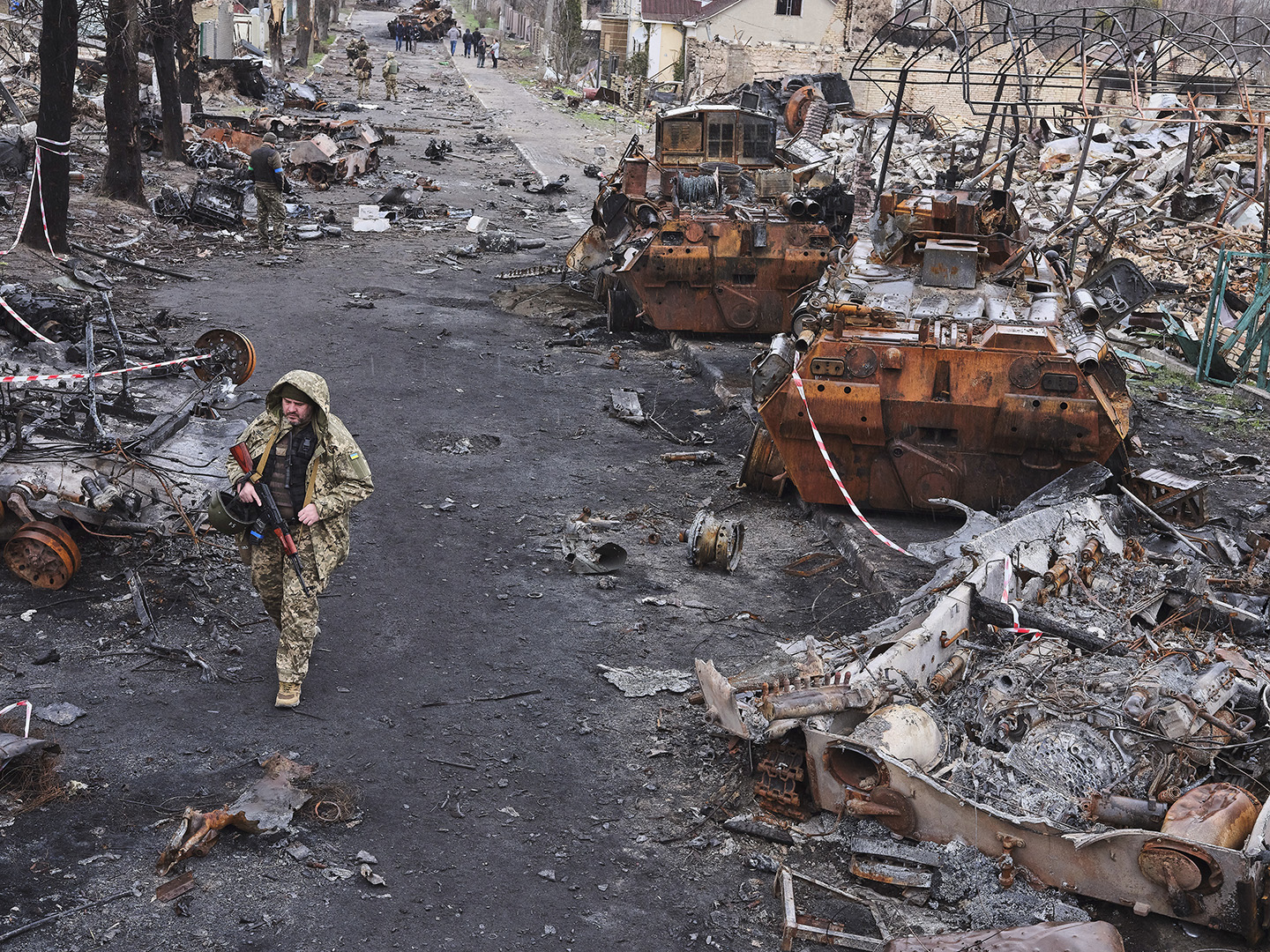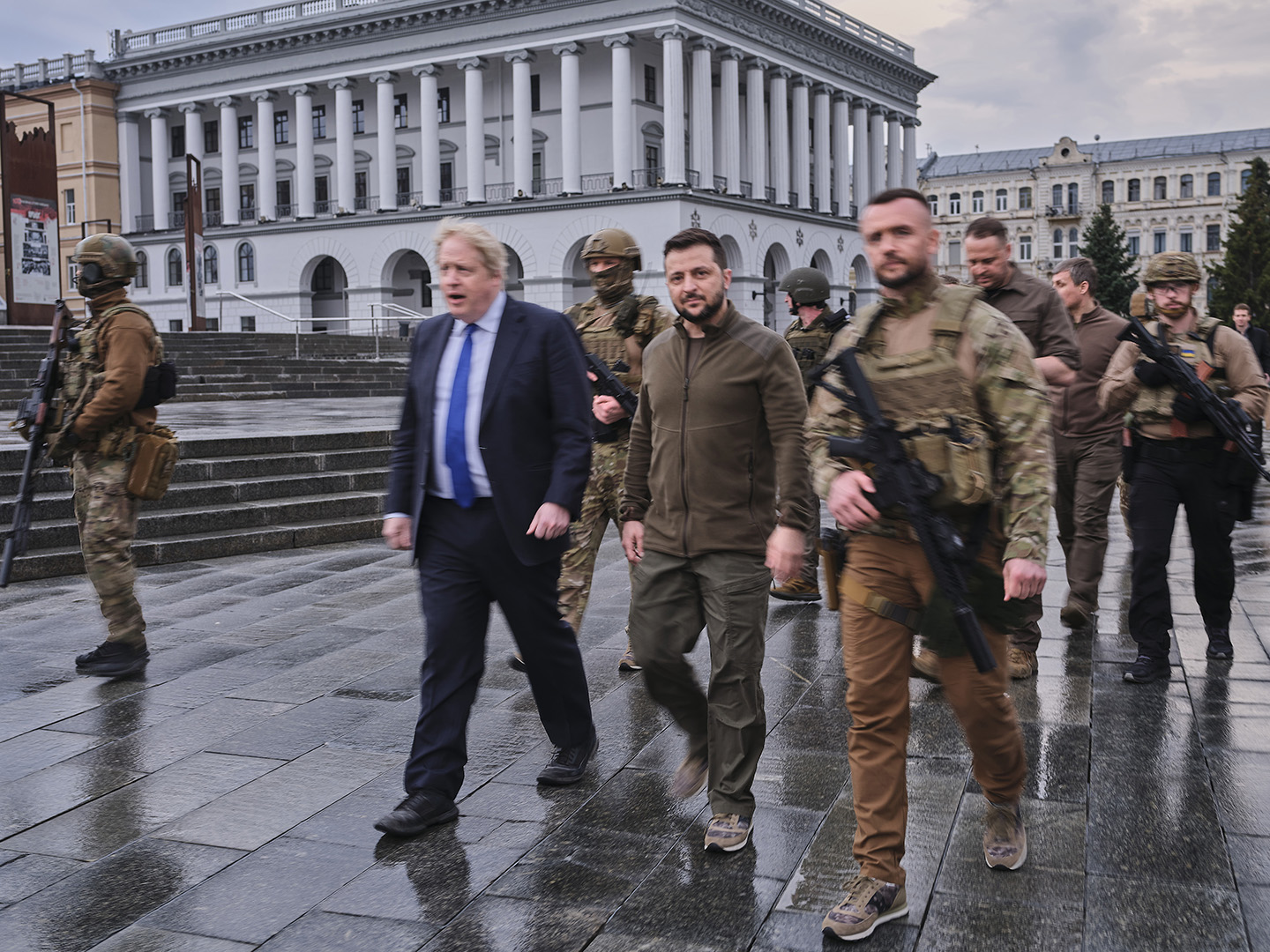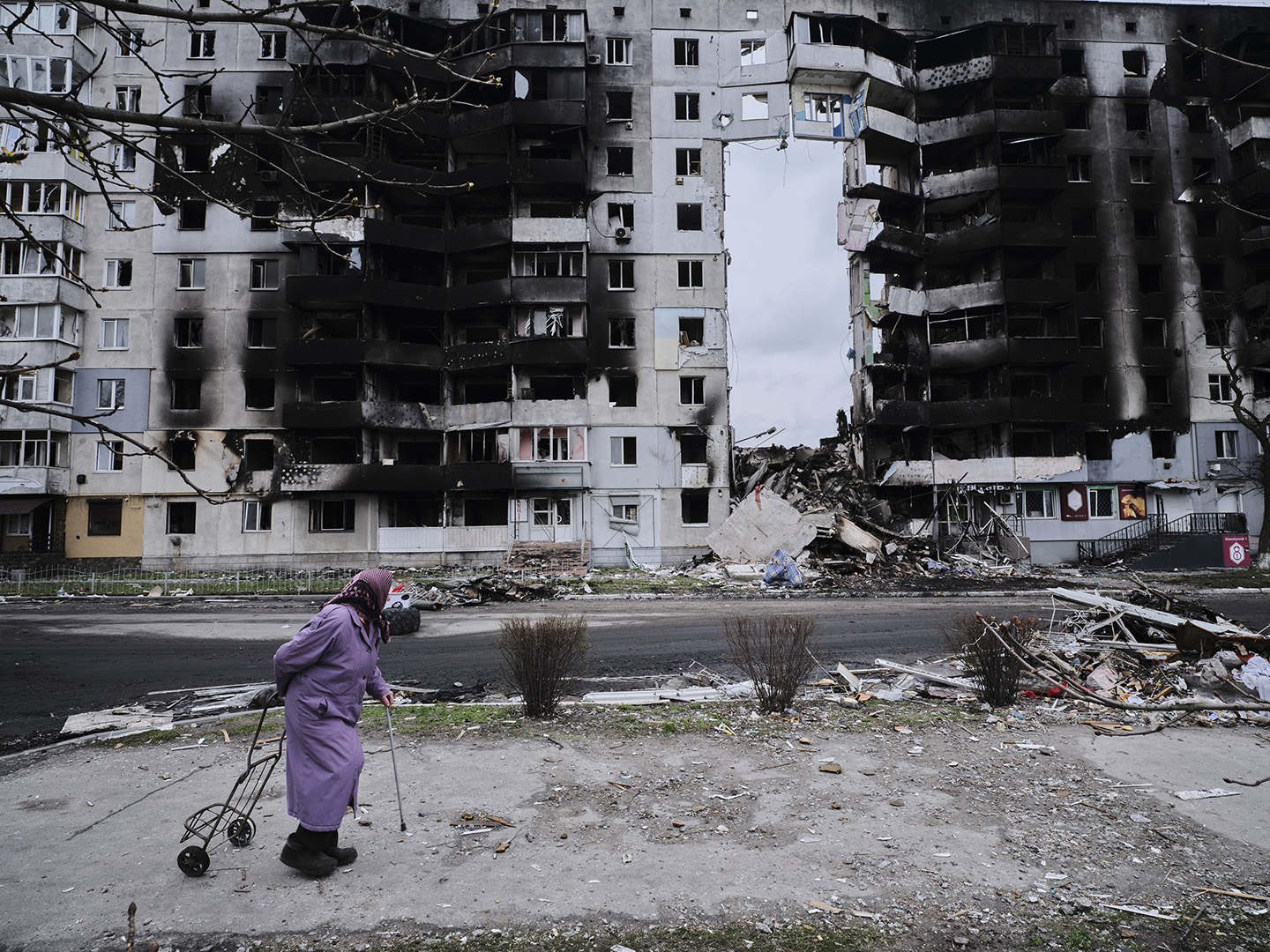The war in Ukraine, 2022
In western Ukraine, the city of Lviv has been relatively spared by fighting since the start of the Russian invasion. It welcomes the massive flow of displaced Ukrainians who arrive at the train station with the hope of reaching the Polish border and finding refuge there. In the back, the population remains supportive and active : some civilians make camouflage nets for the soldiers, despite the danger. The town was still subject to bombing alerts.
In front of the military church of the Holy Apostles Peter and Paul in Lviv, a large procession flows into the surrounding greyness. Here, funerals have been held almost daily since the very first days of the war. A mother buries her son who was killed in the bombing of an administrative building in Mykolaïv, in the south-east. Soldiers pay their last respects to their comrades who died fighting for Ukraine.
Elsewhere in the city, civilians are looking for helmets and body armour to go to the front. Among them, a Ukrainian testifies to the brainwashing of his family back in Russia: “It’s painful for me because they believe that the Russians are helping the Ukrainians to get rid of a Nazi government.”
In the Kyiv oblast, in Borodyanka, everything is ruined and destroyed. The few buildings left standing are burnt out ; the town has been gutted. Since 6 April and the departure of the Russian troops, the Ukrainian security forces have been clearing the terrain in search of mines potentially laid by the invader. The rescue services are looking for survivors. A few kilometres away, Boutcha also reveals the horror of the massacre


